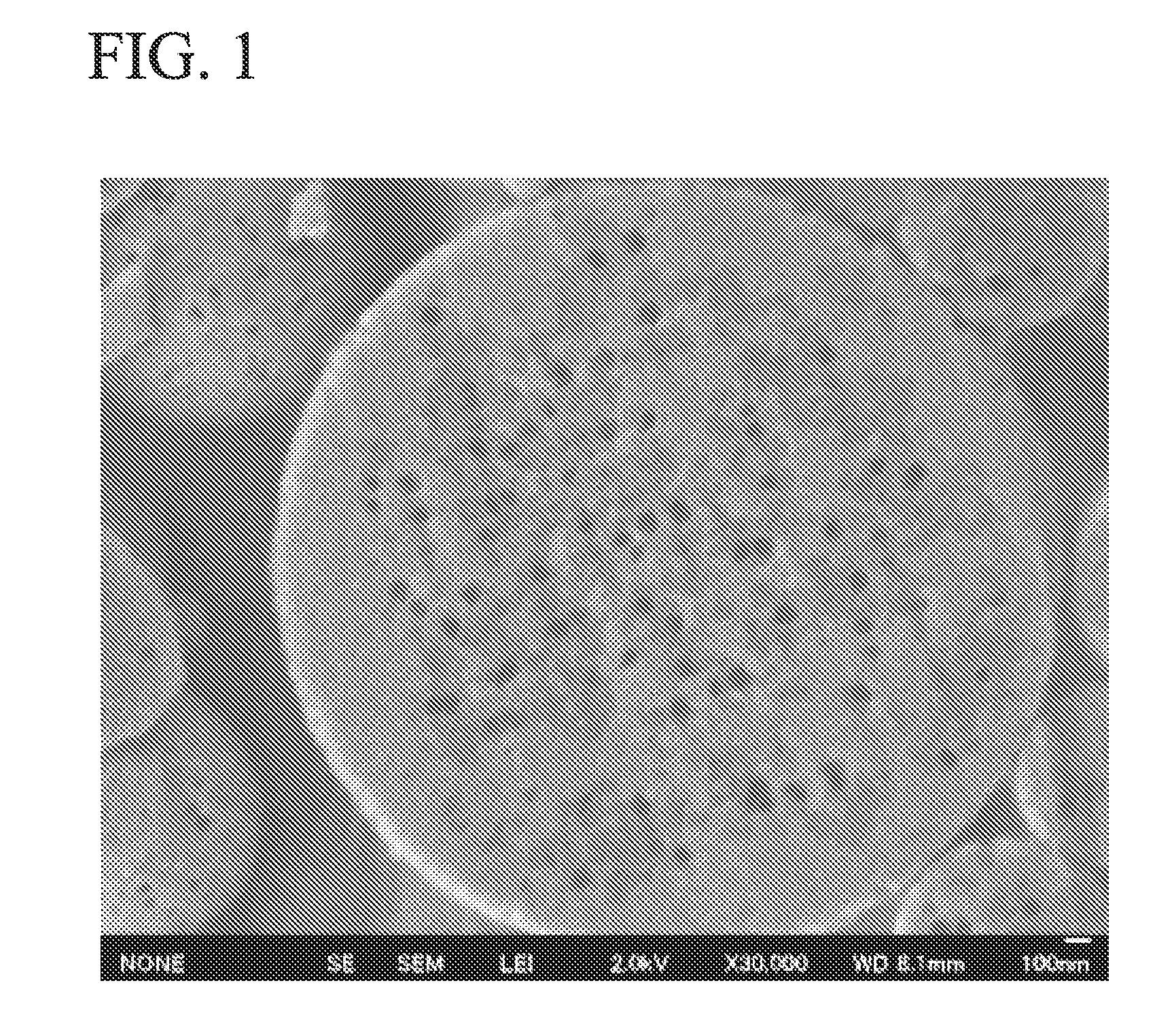Method for manufacturing carbon material for lithium ion secondary batteries, carbon material for lithium ion secondary batteries, negative electrode active material for lithium ion secondary batteries, composition, carbon composite for negative electrode materials of lithium ion secondary batteries, negative electrode compound for lithium ion secondary batteries, negative electrode for lithium ion secondary batteries, and lithium ion secondary battery
a lithium ion secondary battery and carbon material technology, applied in the direction of carbon preparation/purification, carbon composite, negative electrode materials of lithium ion secondary batteries, etc., can solve the problems of negative electrode material turning into tine powder and dropping from the electrode, negative electrode breaking, difficult to stabilize the charge and discharge characteristics, etc., to improve the charge and discharge cycle characteristics, improve the charge and discharge capacity density, and improve the effect of discharge capacity density
- Summary
- Abstract
- Description
- Claims
- Application Information
AI Technical Summary
Benefits of technology
Problems solved by technology
Method used
Image
Examples
first embodiment
[0056]Hereinafter, a method for manufacturing a carbon material for lithium ion secondary batteries, a carbon material for lithium ion secondary batteries of the invention, a negative electrode compound for lithium ion secondary batteries, a negative electrode for lithium ion secondary batteries, and a lithium ion secondary battery according to a first embodiment of the invention will be described in detail.
[0057]The method for manufacturing a carbon material for lithium ion secondary batteries according to the first embodiment of the invention is a method for manufacturing a carbon material for lithium ion secondary batteries including a mixing step of mixing a phenol resin and a resin composition containing silica particles so as to obtain a mixture, a spraying step of spraying the mixture obtained in the mixing step so as to form liquid droplets, a first thermal treatment step of carrying out a first thermal treatment on the liquid droplets obtained in the spraying step so as to ...
example 1
[0122]1) Mixing Step
[0123]A water-soluble phenol resin (manufactured by Sumitomo Bakelite Co., Ltd., PR55743, 50 wt % aqueous solution, 12 g) as the phenol resin, colloidal silica (manufactured by Nissan Chemical Industries, Ltd., SNOTEX OS, average particle diameter in a range of 8 nm to 11 nm, 20 wt % aqueous solution, 30 g) as the silica particles, styrene butadiene rubber latex (manufactured by JSR Corporation, TRD 2001, average particle diameter of 150 nm, 48 wt % aqueous solution, 1 g) as the void-forming agent, and ion exchange water (541 g) were mixed and stirred in a flask, thereby obtaining a mixture.
[0124]2) Spraying Step
[0125]The mixture was sprayed using an ultrasonic atomizer apparatus (ultrasonic atomizer unit: produced by the inventors using HM-2412 manufactured by Honda Electronics Co., Ltd.), thereby generating liquid droplets.
[0126]3) First Thermal Treatment Step
[0127]The liquid droplets were transported to a furnace at 300° C. in a nitrogen flow, thereby carrying...
example 2
[0137]A carbon material was obtained in the same manner as in Example 1 except for the fact that the thermal treatment temperature was set to 800° C. in the first thermal treatment step, and a lithium ion secondary battery was produced.
PUM
| Property | Measurement | Unit |
|---|---|---|
| temperature | aaaaa | aaaaa |
| temperature | aaaaa | aaaaa |
| particle diameter | aaaaa | aaaaa |
Abstract
Description
Claims
Application Information
 Login to View More
Login to View More - R&D
- Intellectual Property
- Life Sciences
- Materials
- Tech Scout
- Unparalleled Data Quality
- Higher Quality Content
- 60% Fewer Hallucinations
Browse by: Latest US Patents, China's latest patents, Technical Efficacy Thesaurus, Application Domain, Technology Topic, Popular Technical Reports.
© 2025 PatSnap. All rights reserved.Legal|Privacy policy|Modern Slavery Act Transparency Statement|Sitemap|About US| Contact US: help@patsnap.com

